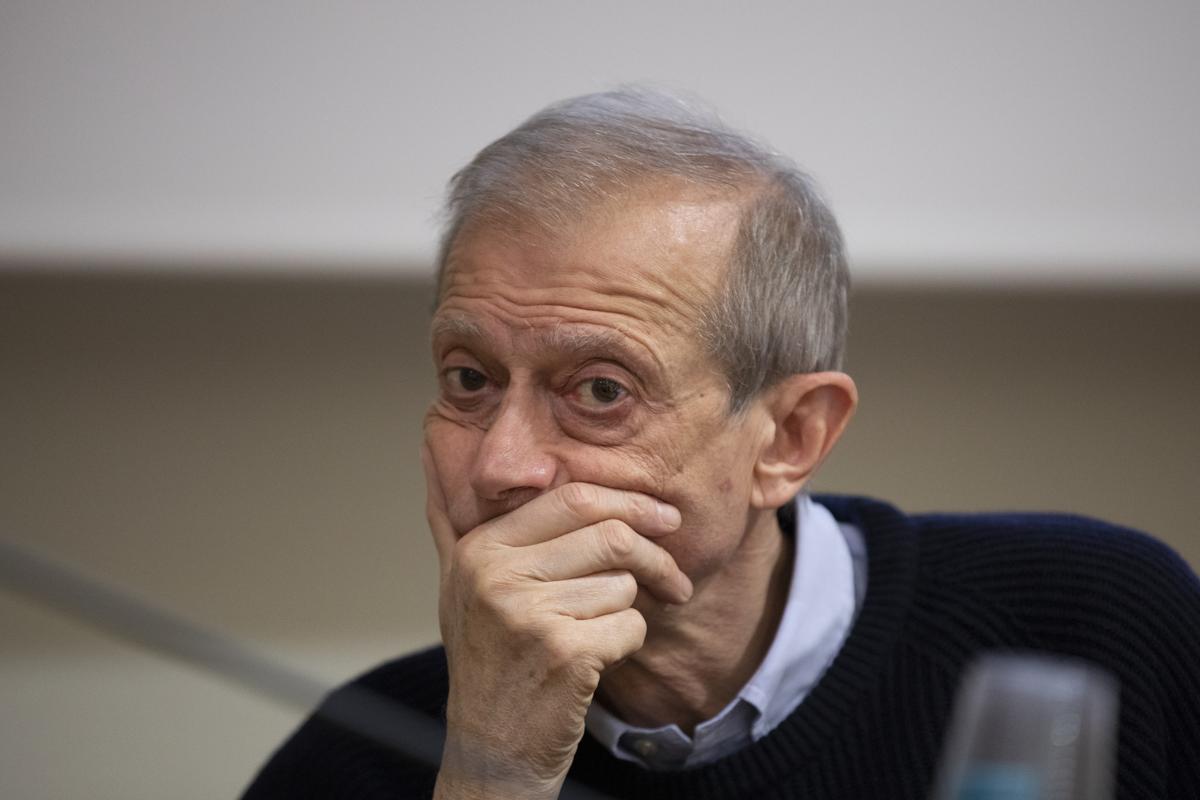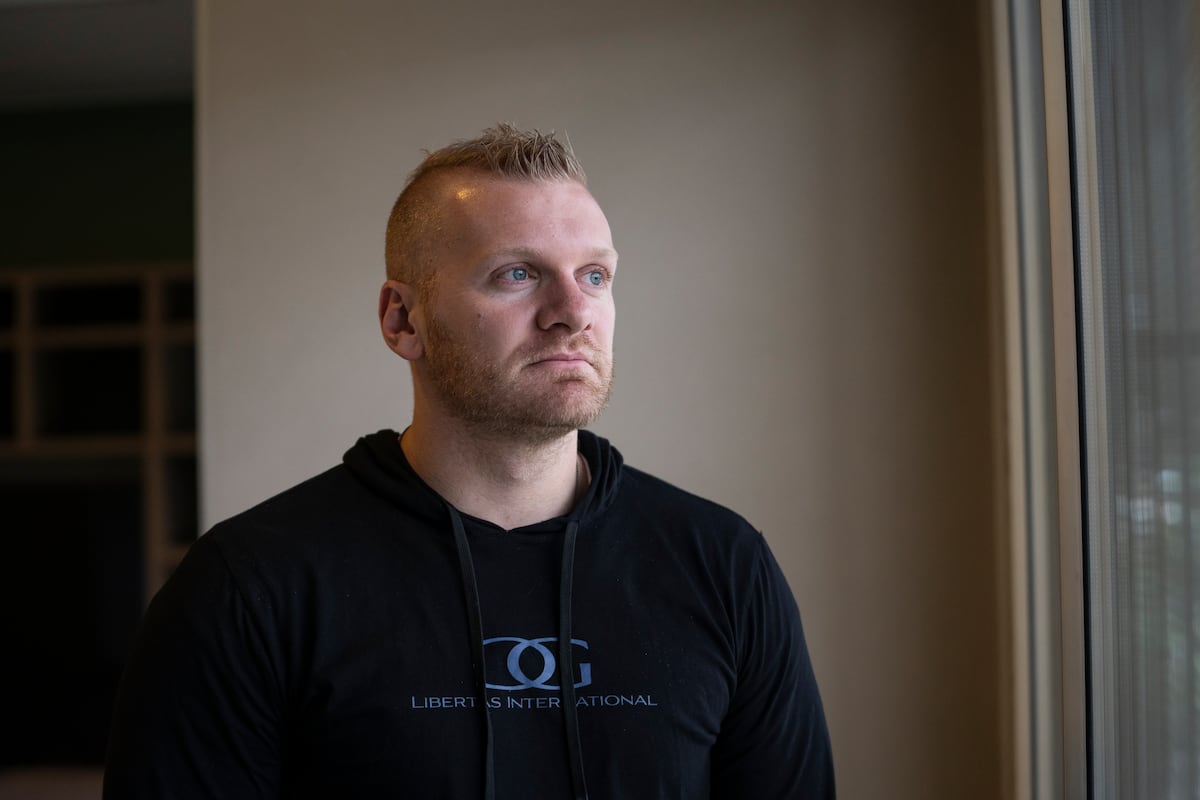VOLUME OF FIRE Hunga Tonga-Hunga Ha’apai erupted in January with spectacular and catastrophic consequences.
Tsunami waves hit the entire Pacific coastline from China to Chile and Alaska to New Zealand. At its highest, the waves were 15 meters long. At least three people died in them.
The Tonga eruption was released hundreds of times more energy than the atomic bomb that destroyed Hiroshima in 1945.
The eruption was immediately visible in the satellite imagery as a huge brown spot on the surface of our planet and in the atmosphere.
A photograph taken from the International Space Station shows the extent to which the ash spread into the atmosphere from the Hunga Tonga-Hunga Ha’apain eruption.
Small however, that eruption was.
“Less than ten cubic kilometers were released into the air during the Hunga-Tonga eruption,” said the senior curator of the Central Museum of Natural History at the University of Helsinki. Arto Luttinen.
Ten cubic kilometers may sound like a large amount of lava, ash and boulders, but the eruptions of so-called super volcanoes already release a thousand cubic kilometers.
Hunga Tonga-Hunga Ha’apai was one of the eruptions in the world’s most sensitive chain of volcanoes, the Pacific Ring of Fire.
It orbits the entire Pacific Ocean and roughly follows the shoreline. Several volcanic islands are directly on its line, including Japan, New Zealand and Indonesia.
The ring of fire is 40,000 kilometers long and hundreds of kilometers wide. Its along the can be found two of the world’s three active volcanoes. About 90 percent of the world’s earthquakes shake along its length.
The four largest eruptions of about 12,000 in the last year have rumbled on the ring of fire.
When Indonesian Tambora erupted in the most powerful man-witnessed volcanic eruption in 1815, the sound carried thousands of miles.
The resulting ash cloud cooled the entire earth for a year so that the year 1816 is known as summerless. The crops failed around the world and as many as hundreds of thousands of people died as a result.
The area of the ring of fire is thus geologically turbulent. When an eruption occurs along it, it can affect the whole world.
Where from the perimeter of volcanoes was born? It all started about 200 million years ago.
We lived through the Triassic, when the first lizards had just crawled into the world in the wake of the greatest genocide in history, the Permian catastrophe.
The lizards inhabited the vast supercontinent of Pangea. Pangea means all the land, and all the land was in it. The continents of the earth were attached to each other. As the Triassic season drew to a close and the Jurassic season began, the continents began to recede.
The surface of the earth is made up of several huge tiles with continents and seas on top. Tiles move very slowly over millions of years.
“We are still living in the tectonic phase that the continents are currently moving further apart, especially around the Atlantic Ocean,” Luttinen explains.
Eurasia and America are moving further and further apart, about 2.5 centimeters a year. In the Pacific, things are different.
“In the coastal areas of the Pacific, the tectonic plates of the earth collide. The Pacific slab sinks under other slabs, which is essentially associated with volcanism, ”says Luttinen.
Thousands of and a ring of fire thousands of miles long is thus the result of the very slow collision of huge tectonic plates. Typically, volcanic chains emerge about a hundred miles behind the point of impact itself.
“The concept of a volcano is a hint of whimsy, as volcanic eruptions do not spit fire, and there are not always mountains. There don’t seem to be many languages that combine fire and mountain, ”says Luttinen.
In the opinion of the Chief Curator volcano is a better word, like English volcano. The concept is derived from the ancient Roman fire god Vulcanus.
“Volcanism is about the formation of a hot melt of rock in the earth’s crust, magma, which pushes from a hole in the earth’s surface. After all, this rock melt often forms mountains in these areas where volcanism occurs, ”Luttinen explains.
The eruption of Pinatubo left the crater lake. It’s already time for the eruption, so the landscape is greening.
Pacific In the area of the ring of fire, volcanism does create volcanoes in tile collisions. However, similar activity exists where the tiles tend to detach from each other.
“Under both the Pacific and Atlantic and Indian Oceans, there is plenty of volcanism in the rupture zones around the middle of the sea,” says Luttinen.
“
“There may be volcanoes in Finland in millions of years.”
“In them, the seas are growing in breadth, but volcanoes are not allowed to grow in them. As new eruptions form from the eruptions, the old ones have already escaped from below as the seabed widens. That way there will be volcanoes that will not become mountains. ”
In the Pacific, the movement of the plates is at such a stage that the largest part of the points of impact are around the Pacific plate and form the Ring of Fire.
The Atlantic does not have such a perimeter, as there are no tile collision areas along the coasts. Instead, several volcanoes in the Mediterranean arise from the collision zone of the African-European slab.
“It has been speculated, however, that seismic activity off the Norwegian coast may be linked to the emergence of a new collision area. If that happens, there will be volcanoes in Finland in millions of years and we will be part of the Atlantic Arctic Circle. ”
Volcanism is therefore where the tiles collide or separate. But volcanism also occurs in mystical hot spots.
The hot spots are far from the edges of the tiles, but they can have very active volcanoes.
Therefore, in the middle of the Pacific, the Hawaiian Islands have briskly active volcanoes, although it is not part of the ring of fire. The hot spots are the great mysteries of geology and at the heart of Luttinen’s research.
World perhaps the most famous hot spot is located in Yellowstone National Park under a dormant “super volcano”. The term Luttinen is often used sensationally.
“A super volcano simply suggests that the volcano has erupted very strongly at some point in its life,” Luttinen opens.
Scientists prefer to talk about the eruption that created the caldera rather than the very large eruptions of the volcano.
Super volcanoes erupt very rarely, as volcanoes have to collect enough mass for a very long time. Magma accumulates for thousands of years until the pressure becomes too high and a huge amount of material is thrown up from the earth’s crust. This is when the volcano collapses into an empty space left by magma.
“A caldera or sinking valley is created,” Luttinen opens the term.
World the last superburst occurred about 27,000 years ago on the Pacific Ring of Fire.
Taupōi, on the north island of New Zealand, threw so much magma and ash into the air that thousands of miles away the earth was covered in a 20-centimeter-thick layer of ash.
The resulting caldera is 140 square kilometers in size and is now the bottom of Lake Taupō, a popular tourist destination.
Even then, Taupō has coughed. The last major eruption occurred approximately 180 years before the beginning of our era.
Although it was not a superburst, it was perhaps found on the other side of the world in ancient Rome, where Antioch Herodian said the day had turned into a night and the earth was shaking.
The ancient Chinese also recorded strange weather phenomena at the same time.
So however, said super volcanoes are very rare. Traces have been found signs about sixty superbursts, but they have a time of tens of thousands or millions of years.
Perhaps the most famous super volcano in the world is below Yellowstone National Park in the United States. The word Luttinen is often used sensationally.
“A super volcano simply suggests that the volcano has erupted very strongly at some point in its life,” Luttinen opens.
Super volcanoes erupt very rarely, as volcanoes have to collect enough mass for a very long time. Magma accumulates for thousands of years until the pressure becomes too high.
Scientists prefer to talk about the eruption that created the caldera rather than the very large eruptions of the volcano.
Just The Pacific Ring of Fire consists mainly of ordinary volcanoes that are variable in activity.
“Volcanoes are basically divided into three types,” explains Luttinen.
The volcanoes in the collision zone of the firearm are mainly formations that look familiar to us from pop culture. Cone-shaped, steep and often snow-capped, in Luttinen’s words “like Aku in Duck”.
They say stratified volcanoes. From time to time, tough lava and ash are released from them. The alternating layers gradually increase in height. Symmetrical natural formations emerge, such as the Japanese belonging to Fuji.
Then are shield volcanoes. There are shield volcanoes in Hawaii and other so-called hot spots, for example. They just don’t explode, but mostly unload lava extensively.
Such is the largest volcano in the world, Mauna Loa, Hawaii. It resembles a high, gentle ridge.
Lava erupts in Hawaii from Mauna Loa, a type of Shield Volcano.
“The last class is then a slag beam. They usually form on the slopes of a layered or shielded volcano, ”says Luttinen.
And such is Hunga Tonga-Hunga Ha’apai, whose stratovolcano was almost entirely above sea level.
“They are such small mountains, a few kilometers in diameter, born of rock splashing in the air.”
Layered volcanoes are usually at least ten kilometers in diameter from the base, shield volcanoes over a hundred kilometers.
“Most of the volcanoes don’t erupt spectacularly, but little by little.”
Tongan in the eruption, earlier smaller eruptions piled up a slag beam at the top of the volcano between the two islands. The last eruption took place under the sea, which greatly intensifies the eruption.
“When magma meets seawater and the water turns into steam, there is a huge increase in volume. Water requires about 70 times the volume of liquid compared to liquid. The encounter between water and magma causes a huge burst that is like throwing water on a stove, ”Luttinen describes.
In collision areas, the sensitivity to explosion is still particularly strong. In a fire ring, the magma is tough and volcanic gases do not escape so easily. Strong pressure boilers are created.
“
“The ring of fire is still going through a couple of dozen eruptions.”
Tongan in the case of an eruption, the situation was aggravated by the fact that the water at the outlet was shallow, only a hundred or two hundred meters deep.
“If there had been a kilometer of water on it, the pressure of that water would have been so great that the magma’s own steam would not have escaped.”
When the rock melt is deep under high pressure, water and gases remain dissolved, like carbon dioxide in mineral water. When the cap is opened, the contents are released.
The biggest the devastation in Tonga and elsewhere in the Pacific was caused by a tsunami caused by a volcanic eruption.
It can occur in a volcanic eruption in many ways, such as an ash cloud avalanche, an earthquake, or if a volcanic slope collapses.
“I, too, have used the expression that the island flew into the air, but in reality it may be that much of the material lost in the eruption collapsed to the bottom of the sea. In practice, however, whenever there is a violent eruption, a tsunami arises, ”Luttinen explains.
The eruption of Tonga was also accompanied by a strong bang. A small tsunami may be caused by a wave of pressure spreading into the atmosphere.
“It’s a bit like blowing water on the surface.”
Sometimes volcanoes can collapse without eruption and cause a tsunami. The deposits are quite acidic.
Pacific the ring of fire is not uniform. A small eruption like Tonga does not mean that the probability of an eruption is increasing in Japan, for example.
“In the vicinity, the eruption may cause other volcanoes to become active, but in the larger picture, this is irrelevant. The fire ring is still going through about twenty eruptions. ”
#Volcanoes #Pacific #ring #fire #summer #world #Tonga #eruption #cough







